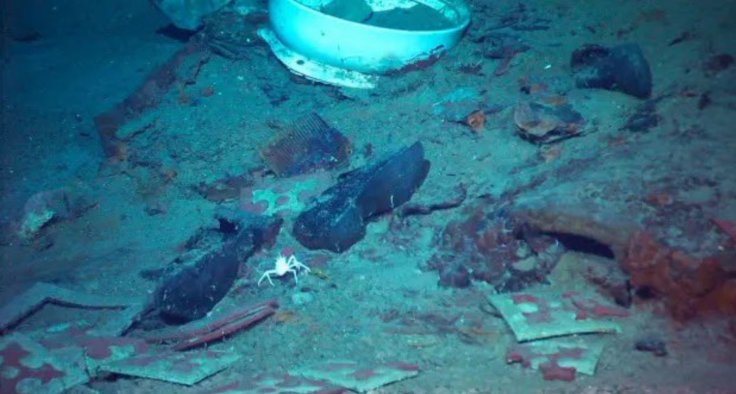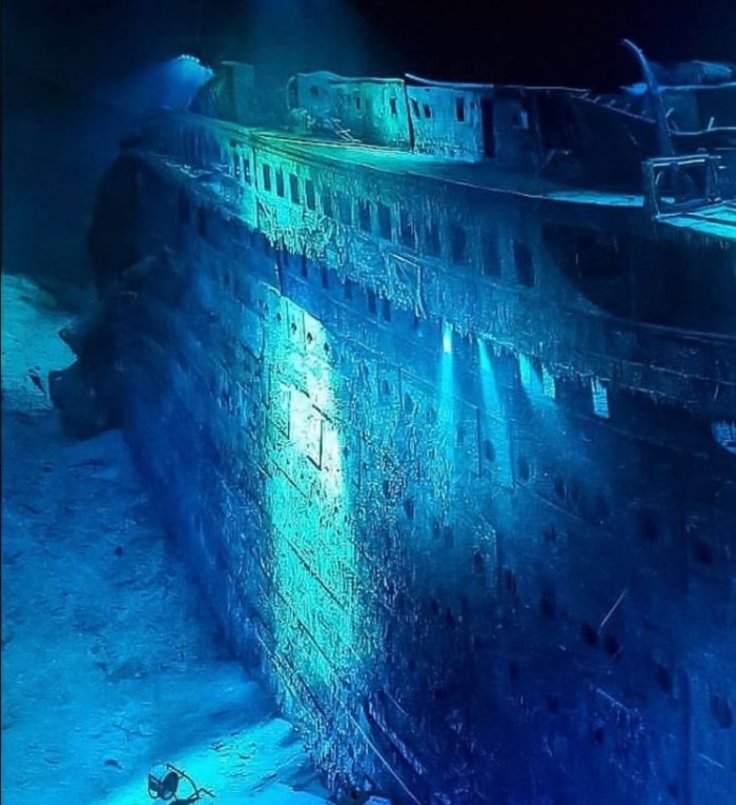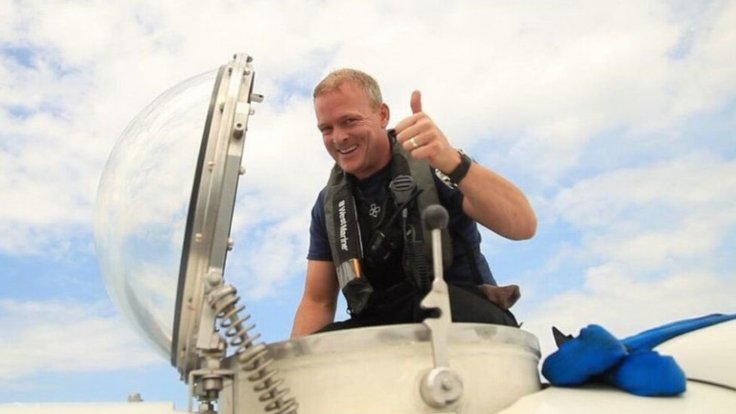The Titan submersible carrying five tourists suffered a “catastrophic implosion” just 1,600ft from the bow of the wreckage of the Titanic, killing all passengers instantly, the US Coast Guard announced on Thursday. The fanatic search for the five people on the submarine drew to a devastating close after a Canadian ship found debris from the vessel on the ocean floor.
The debris on the ocean floor found on Thursday is “consistent with the catastrophic loss of the pressure chamber,” which practically means that the sub was crushed under the weight of the ocean at some point after it lost touch with its surface vessel on Sunday.
Died Within a Millisecond
According to search and rescue authorities, it is believed that the five passengers likely died on Sunday, prior to the detection of potential distress signals in the water by military planes equipped with sonar buoys.
US Coast Guard officials reported the discovery of five significant pieces of debris from the OceanGate submersible approximately 1,600 feet away from the wreckage of the Titanic which sank in 1912.
The cause and timing of the implosion that occurred during the descent of the submarine to the ocean floor, which is approximately 12,500 feet deep, remain unclear.
The Coast Guard added that they “don’t have an answer for prospects of recovering the bodies,” noting how difficult it would be to look for and remove wreckage from the ocean floor.
The five tourists who lost their lives in the incident include Stockton Rush, the CEO of OceanGate; Paul-Henri (PH) Nargeolet, a former French Navy veteran; Hamish Harding, a British billionaire; Shahzada Dawood, a Pakistani businessman; and his 19-year-old son, Suleman.
“The implosion would have generated a significant, broadband sound that the sonar buoys would have picked up,” Rear Admiral John Mauger of the US Coast Guard said at a press conference on Thursday.

The men, some of whom had paid $250,000 each to see the renowned shipwreck, likely died instantly.
In a devastating blow to their families, experts have determined that there is little hope of recovering any of the victims’ remains.
“This is an incredibly unforgiving environment down there. The debris is consistent of a catastrophic implosion of the vessel.. we’ll continue to work and search the area down there – but I don’t have an answer for prospects at this time,” Paul Hankin, a deep sea expert involved in the search, said.

“We offer our most heartfelt condolences for the loved ones of the crew,” Coast Guard Capt. Jamie Frederick said Thursday.
Lost and Never Found
The US First Coast Guard District officially announced on Thursday afternoon that debris from the Titan submarine, including its nosecone and the front end bell of the pressure hull, was discovered by a Remotely Operated Vehicle (ROV), an unmanned underwater probe.

“A debris field was discovered within the search area by an ROV near the Titanic,” Rear Admiral John Mauger said, adding a “Smaller debris field within the debris field,” had been found by Odysseus 6K, an ROV made by Mass. based Pelagic Research Services, which had been launched from the Canadian ship Horizon Arctic.
The Coast Guard also stated that the recovered debris, along with associated information, is currently undergoing evaluation and assessment.

According to rescue expert David Mearns, who had been in touch with people close to some of the victims, the group was informed that the recovered debris consisted of “a landing frame and a rear cover from the submersible.”
“Again, this is a very unconventional submarine. That rear cover is that pointy end of it and the landing frame is this little frame that it seems to sit on … that confirms it’s the submersible,” Mearns, who was friends with billionaire Harding and Nargeolet, told Sky News.
Nicknamed “shipwreck hunter,” David Mearns added that he had received information indicating that the submersible’s hull is still missing, and the detection of the recovered debris suggests that could only have happened if the “submersible had fragmented,” implying an implosion of the vessel.

The search efforts for the five people aboard the submersible drew to an end with the discovery of debris on the ocean floor. The search began on Sunday when the crew of the Polar Prince, the ship from which the submersible was launched, reported it as missing.
OceanGate informed the Coast Guard that the Titan submarine had a limited oxygen supply of 96 hours when it submerged near the coast of Newfoundland, initiating a race against time to locate the vessel and its five occupants.

The passengers were sealed inside the submersible with 17 bolts securing the hatch from the outside. Initial speculation suggested that the submersible might be trapped within the Titanic wreckage, but still intact at a depth of 12,500 feet, with oxygen running out.
The US and Canadian Coast Guards worked together to conduct the fanatic search, and numerous other countries also sent hundreds of ships to the area to help in the search.
This was one of the main issues with the rescue efforts was the depth since no successful rescue has ever been made deeper than 1,750 feet below the surface.






